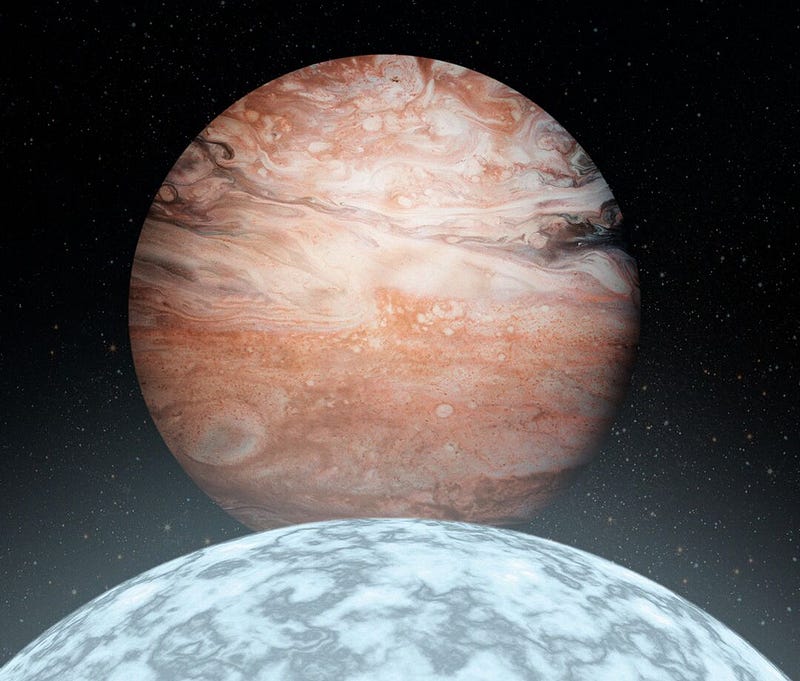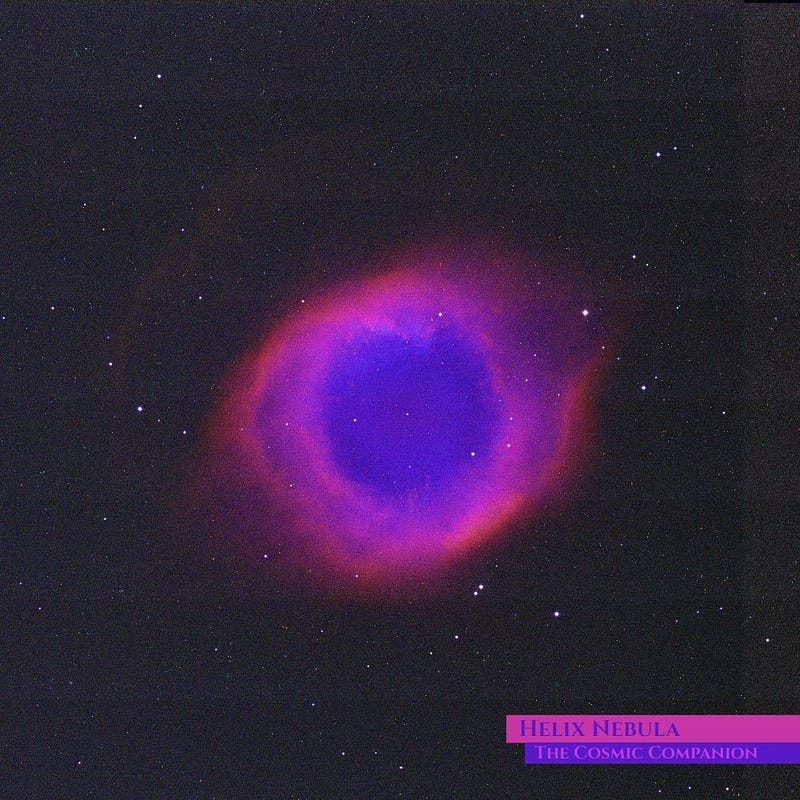The Future of Our Solar System: Insights into Celestial Changes
Written on
The Inevitable Fate of Our Solar System
In less than five billion years, our solar system will face its end, a scenario we can observe unfolding in other stellar systems.

Imagining a distant future, an artist’s rendering depicts our Sun transformed into a white dwarf alongside Jupiter. Should humanity persist for another five billion years (which is highly unlikely), we would witness the Sun's transition into a colossal red giant, consuming Mercury, Venus, and potentially Earth. Following this phase, it will contract into a white dwarf, leaving behind an expansive cloud of gas and dust drifting through space.
Despite extensive research, many questions about the demise of our solar system remain unanswered. Astronomers are keen to study exoplanets orbiting white dwarf stars to gain insights into the eventual fate of our own planetary system. However, the challenge lies in the fact that white dwarfs emit minimal radiation, complicating the detection of exoplanets in their vicinity. Among the approximately 4,500 known exoplanets, only a few orbit white dwarf stars, all of which emerged in their systems after the star's death.
A Glimpse into a Futuristic Solar System
Recent discoveries have unveiled a Jupiter-like planet orbiting a star that closely resembles our own Sun, but which is now mostly extinguished—a remnant of what was once a vibrant star. This world is the first identified in a dead solar system, showcasing an orbit that remained unchanged despite the demise of its sun.
“This finding confirms that planets positioned at sufficient distances can continue to exist even after their star has died. This system serves as an analog for our solar system, suggesting that Jupiter and Saturn could survive the Sun's red giant phase, when it exhausts its nuclear fuel and self-destructs,” states Joshua Blackman, an astronomy postdoctoral researcher at the University of Tasmania.
The stellar body at the heart of this system possesses about half the mass of our Sun, while the surviving planet is thought to be approximately 40% more massive than Jupiter.
“This system demonstrates that planets orbiting white dwarfs can endure the giant and asymptotic giant phases of their host’s evolution, supporting the prediction that more than half of white dwarfs likely harbor Jovian companions… This may represent the end stages of our Sun and Jupiter,” researchers noted in a publication in Nature.
Interestingly, while astronomers struggle to find exoplanets around white dwarfs, they can detect asteroid collisions with these stellar remnants. These exoasteroids are believed to collide with the stars after being redirected by unseen exoplanets. By observing the light emitted during these impacts, researchers can infer how many planets might have survived the red giant phase of their parent star.

This newly discovered system, located 6,500 light-years away in the direction of the Milky Way's center, was identified at the Keck Observatory in Hawaii. As stars move through space, this system temporarily passed nearly “in front” of a more distant star, creating a gravitational lensing effect. Subtle variations in this effect can reveal the existence of an unseen planet, with this technique particularly adept at detecting exoplanets comparable in size and distance to Jupiter.
In the coming years, the GAIA Mission is expected to provide additional insights into the demise of solar systems, with the discovery of more planets orbiting expired stars. Furthermore, the Nancy Grace Roman Telescope, designed to directly image giant planets, is anticipated to uncover even more of these hidden celestial bodies.
“Earth's future may not be as bright, given its proximity to the Sun. If humanity wishes to relocate to a moon of Jupiter or Saturn before the Sun scorches the Earth during its red supergiant phase, we would still orbit the Sun, but we would not be able to rely on the Sun's warmth as a white dwarf for extended periods,” notes David Bennett from the University of Maryland and NASA’s Goddard Space Flight Center.
This discovery indicates that Jupiter and its moons are likely to survive the Sun's demise, which is promising news for potential life on Europa's oceans. However, for those still on Earth—it's time to say goodbye!
James Maynard has a background in physics, chemistry, and history, and is the founder and publisher of The Cosmic Companion. A lifelong space enthusiast, he now resides in Tucson, Arizona, with his wife, Nicole, and their cat, Max.
Did you enjoy this article? Subscribe for updates via email on Medium! Join us at The Cosmic Companion Network for our podcast, weekly video series, and informative newsletters.